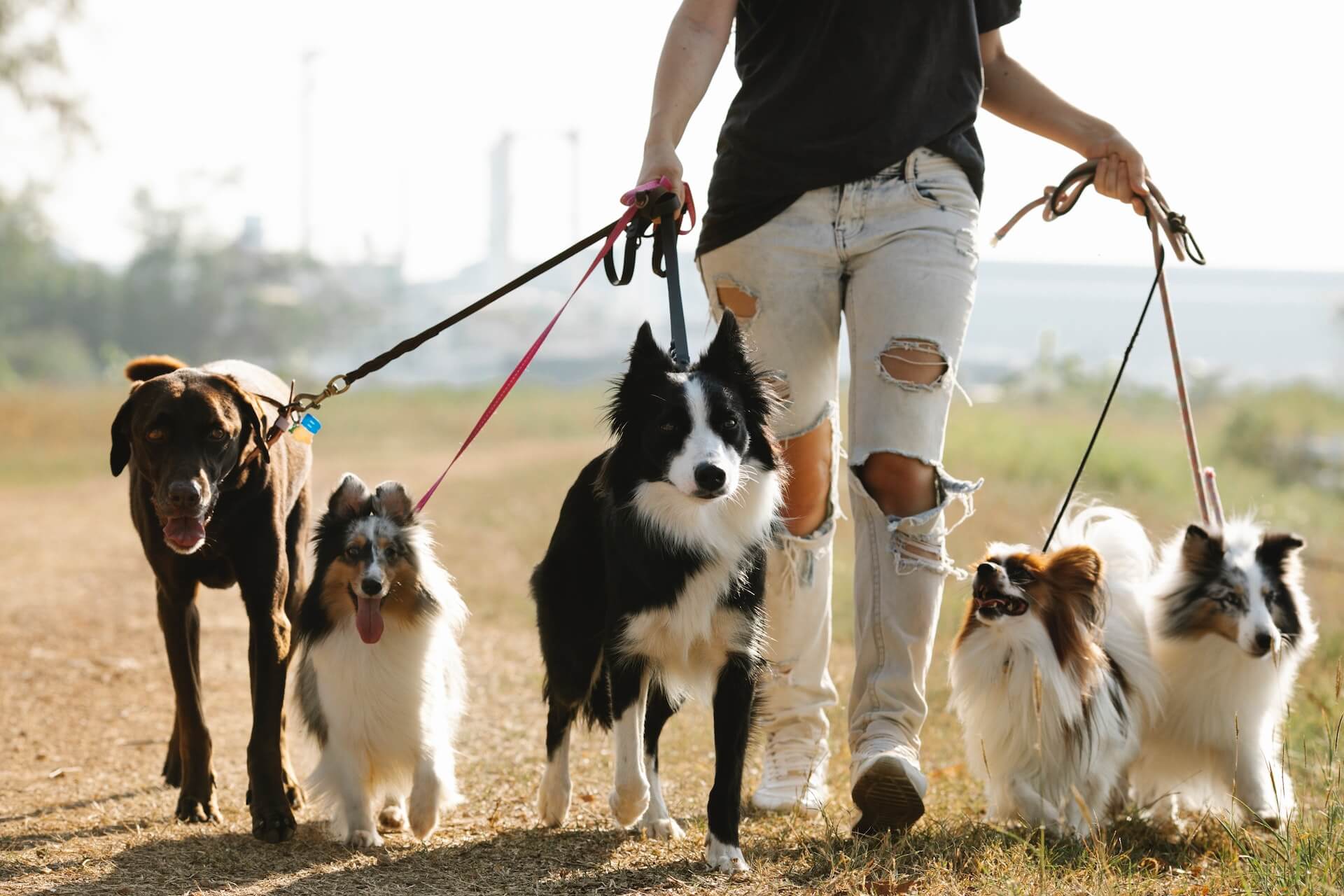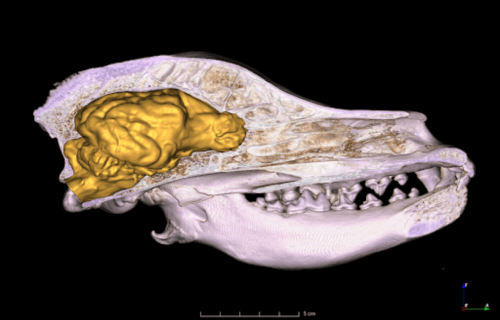BUDAPEST, Hungary — Is your dog the smartest pup on the block? Then it’s likely they have a lot less wolf in them than their other furry friends. According to a new study, modern dog breeds which are more genetically distant from their wolf cousins have larger brains than other canines. While this might sound like a normal step in evolution, it’s actually a shocking revelation to animal scientists.
Until now, scientists have believed that the brains of domesticated animals are generally smaller than their wild ancestors. Researchers at Eötvös Loránd University (ELTE) say the explanation is simple — household pets have a lot less to think about! Compared to animals in the wild, like the wolves dogs evolved from, pet dogs living in a safe home don’t have to think about fighting off predators or hunting through the woods for food. The team notes that thinking and cognitive processes require a lot of energy, and maintaining a larger brain can be costly.
“The brains of domesticated animals can be up to twenty percent smaller than those of their wild ancestors. The likely reason for this is that the lives of domesticated species are simpler compared to those of their wild counterparts. In the safe environment provided by humans, there is no need to fear predator attacks or hunt for food. Therefore, there is no need to sustain the energetically costly large brain, and the freed-up energy can be directed towards other purposes, such as producing more offspring, which is important for domesticated animals,” explains László Zsolt Garamszegi, an evolutionary biologist at the Ecological Research Centre in Hungary, in a university release.
“Different dog breeds live in varying levels of social complexity and perform complex tasks, which likely require a larger brain capacity. Therefore, we hypothesize that the selective pressures on the brain can vary within the dog species, and we may find differences in brain size among breeds based on the tasks they perform or their genetic distance from wolves,” adds Niclas Kolm from Stockholm University.

Tibor Csörgő, a senior research fellow at ELTE, has been collecting animal skulls for decades. That work enabled the team to perform CT scans and reconstruct the brains of these animals to determine their exact volume. In total, the team gathered data on 865 dogs from 159 different breeds, as well as 48 skulls representing wolves.
This marks the first comprehensive study looking at brain size across a wide range of dog breeds, according to the Swedish and Hungarian team.
Results show that the average brain volume for a wolf measures 131 cubic centimeters (cm3), with those canines weighing roughly 31 kg. Meanwhile, dogs of a similar weight had a brain volume that was three-quarters this size — measuring about 100 cm3.
At first, this seemed to confirm the theory that domestication leads to a smaller brain. However, the team then found that dog breeds which were genetically distinct from wolves had larger brains than the rest of the domesticated samples. Moreover, the scientists were surprised to find that the original role of a dog’s breed, their average litter size, and their life expectancy did not factor into their brain size.
“The domestication of dogs began approximately twenty-five thousand years ago, but for ten thousand years, dogs and wolves did not differ in appearance. Many ancient breeds, such as sled dogs, still resemble wolves today. However, the transition to settlement, agriculture, pastoralism, and the accumulation of wealth offered various tasks for dogs, requiring guard dogs, herding dogs, hunting dogs, and even lap dogs. However, a significant portion of the distinct-looking breeds known today has only emerged since the industrial revolution, primarily in the last two centuries, as dog breeding has become a kind of hobby,” says Enikő Kubinyi, a senior research fellow at the Department of Ethology at ELTE.
So, why are modern dog breeds developing bigger brains? Kubinyi theorizes that some of these dogs have a more complex social life than other breeds. Today’s breeds may also be adapting to the increasing impact of urbanization in the modern world, which brings about more rules and expectations for man’s best friend.
The findings are published in the journal Evolution.
You might also be interested in:
- Best Dog Breeds For Home Security: Top 5 Protective Pups According To Canine Experts
- Best Small Dog Breeds: Top 5 Pint-Sized Pups Most Recommended By Experts
- Best Medium-Sized Dog Breeds: Top 5 Pups According To Canine Experts
- Best Large Dog Breeds: Top 5 Gentle Giants Most Recommended By Experts
- Best Dog Training Apps In 2023: Top 5 Resources For Your Growing Pup, According To Experts

